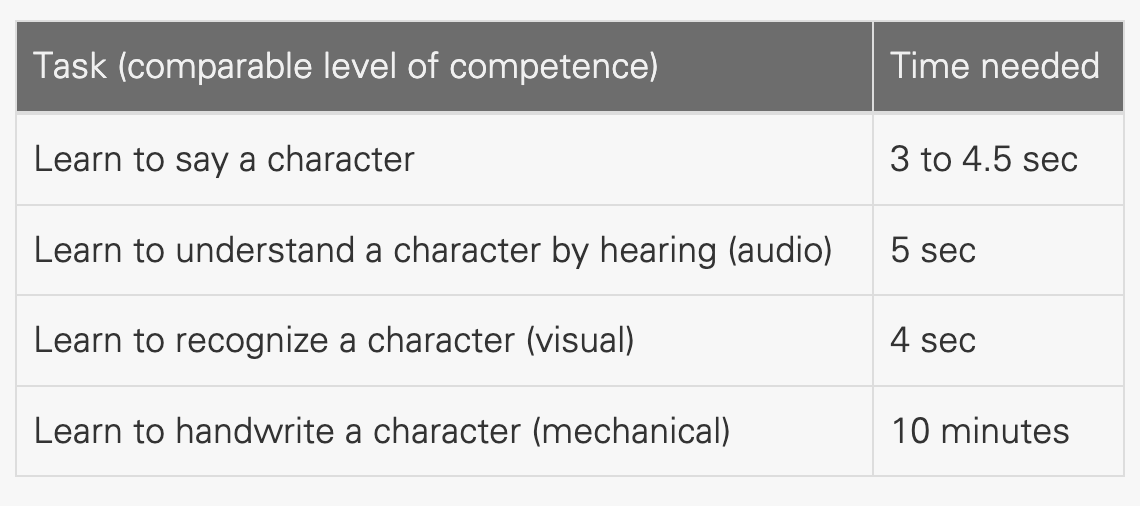Curriculum
Kedao Mandarin Chinese
effective learning method
Officially used by many universities, and business schools, including Beijing Foreign Studies University (BFSU), the Cheung Kong Graduate School of Business, and the University of the Thai Chamber of Commerce (UTCC iSM).

Everyone can learn Chinese more efficiently.
If you study one hour a day, you can pass HSK5 in a year.
Why is this possible?
We have found ways to solve the two biggest difficulties in learning Chinese.
The first is through SVTS (Smart Visualized Tone-marks) to learn tones and Chinese pronunciation.
The second is through the "Organic Recurrence Method" to quickly master Chinese characters.
- 1
Master Chinese Tones with eyes.
Everyone complains that Chinese pronunciation is difficult, but in fact, Chinese pronunciation is a problem on two levels.
It's not difficult to produce a single syllable, such as "ba"; the difficulty lies in accurately pronouncing the 7 tones of Mandarin (Isn't it said to be 4 tones? Why seven? ).
With SVTS (Smart Visualized Tone-marks), everyone can easily and accurately master Mandarin tones—because in the past, learning tones was like learning to sing, with eyes closed, relying only on ears and mouth.
Now, with SVTS, it's like having a conductor who can simultaneously use your eyes and arms to help you remember and accurately pronounce the tones. - 2
Chinese characters is not difficult.
Rapidly mastering and accurately memorizing Chinese characters is every Chinese language learner‘s dream—unfortunately, often nightmare.
The Organic Recurrence Method can solve this problem.
"Organic Recurrence" means allowing new characters and words to repeatedly appear in new contexts and situations.
We not only help you quickly memorize characters through engaging stories of the character, radicals, character components, single-component-characters, but also provide you with reading materials that are 11 times more extensive than traditional textbooks.
This ensures that each key character and keyword is repeated at least 45 times.
Features
-
Abundant extensive materials.
3+1 structure: every 3 lessons plus 1 extension review
-
Strong emphasis on dialogue in each lesson;
Cras semper nulla leo, eget laoreet erat cursus sed. Praesent faucibus massa in purus iaculis dictum.
-
Scientific repetition of keywords
at least 6 times more than traditional textbooks)
Kedao Mandarin Chinese Syllabus
- Each class hour is 50 minutes.
- The National Standard: Chinese Proficiency Grading Standards for International Chinese Language Education (GF0025-2021) is divided into three levels from low to high, namely the level of elementary, the level of intermediate, and the level of advanced. Within each level, there are three bands based on proficiency differences, totaling "three levels and nine bands".
Kedao Chinese HSK National Standard Course (Occupational Plus)
KD-Elementary
The first band, KD1, also known as "Survival Chinese," includes all the language points of HSK 1 and is slightly higher than HSK 1. Learners will possessing basic listening, speaking, reading, and the most fundamental sentence construction abilities. They will be capable of engaging in brief or passive communication on commonly used and familiar topics related to basic daily life, language learning, major and work-related matters, as well as making brief statements and carrying out basic social interactions appropriately.
After learning the third band, KD3, learners will possess general listening, speaking, reading, and paragraph writing abilities. They will be capable of engaging in brief communication, making statements on various topics related to daily life, study, major, interests, and work, and can conduct relatively in-depth and detailed social interactions appropriately.
KD-Intermediate
consists of 3 bands, KD4, KD5, KD6, just like the New HSK. It includes all the language points of HSK-Intermediate, and is higher than HSK.
HSK5 is generally considered as the basic level of 'working proficiency in Chinese'. Because KD5 is higher than HSK5, so learners at this band have achieved "Working Proficiency".
KD6 represents a higher excellency of "working proficiency" and the ability to use Chinese more fluently in a work environment, can better engage in various jobs in a pure target language environment, and can initially engage in translation and teaching work related to Chinese language.
Upon finishing the studying of KD-Intermediate, learners will possess good listening, speaking, reading of authentic materials, as well as general writing and translation skills. They will be capable of conducting appropriate and relatively rich, fluent social interactions on relatively complex work and study topics in related professional fields.
KD-Advanced
consists of 3 bands, just like the HSK-Advanced. It includes all the language points of HSK-Advanced, and is higher than HSK.
Learners at this level can engage in professional Chinese translation and Chinese language teaching work quite well. They will possess advanced listening, speaking, various authentic reading materials, as well as relatively professional writing and translation skills. They will be capable of conducting appropriate and standard social interactions as well as relatively accurate and stylish translations on various topics in different contexts.
Kedao-Mastery
is significantly higher than the HSK-advanced level, and close to that of a well educated native speaker, and "second native language level". In addition to providing detailed explanations for the 355 proverbs in the HSK syllabus, "KD-mastery" also includes approximately 900 common proverbs, as well as 300 common expressions, idioms, and sayings. Learners will possess comprehensive understanding of Chinese culture, tradition, history, etc, and advanced listening, speaking, reading of authentic materials in Chinese, as well as writing skills and the ability to engage in professional translation work, such as press conference, presentations, etc. They will be capable of comprehensively applying various skills to conduct appropriate and standard social interactions as well as accurate and refined translations on various topics in different contexts.
3S teaching system
Teaching Philosophy
Grow fluency in Chinese much faster
Learning to write a Chinese character with a pen or brush can take hundreds of times longer than learning to use that word in a sentence, so we use a new teaching style that separates character writing from other commonly used skills. This way a student can grow fluency in Chinese much faster, and focus on learning writing skills once they are already very comfortable with the language. This is much more efficient than traditional methods, and our students can reach advanced fluency (above HSK5) in half the time required by students using using a traditional curriculum. We call this way of learning 语文分开).
Isolating the tedious task of Chinese character handwriting
The theory is strongly based on the Input theory of linguist Stephen Kraschen. The theory states that language acquisition takes place when the student receives input one step beyond his/her current level. However, when teaching all disciplines of Chinese language learning in one holistic system the input level will be disharmonious due to the time needed to master the separate disciplines. By isolating the tedious task of character handwriting, a rhythm of language acquisition can be achieved by which the student will have progressive success in line with the teachings of the Input Theory.
In order to offer our students the fastest possible progress, the Sinology Institute focuses on the speaking, listening, reading (character recognition) and composition disciplines of the Chinese language. Character handwriting is a minor part of the curriculum and can be further explored at request with the help of our expert teachers.
Where Our Chinese Curriculum was born.
The Sinology Institute
Since we opened in 2005, we have tought thousands of executives, diplomats, and exchange students Mandarin Chinese at our campus in the heart of Beijing. Our alumni include members of the Belgian Royal Family, ambassadors, and executives from global organisations, such as the International Olympic Committee, who have activities in Beijing.
Being in the center of Beijing, next to the Drum and Bell Towers, Houhai Lake and Nanluoguxiang, it is convenient to study part time around work, or full time and explore the city after class.
The Sinology Institute cooperates closely with the non-profit research and development body Datong Chinese to improve our teaching and curriculum.We make learning Mandarin accessible for everyone!

